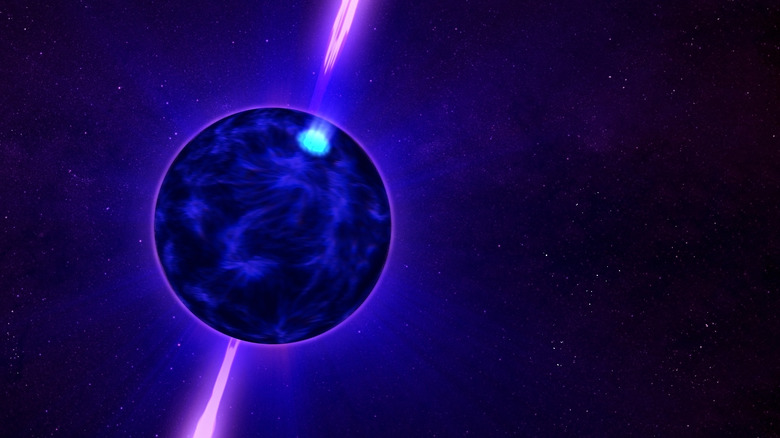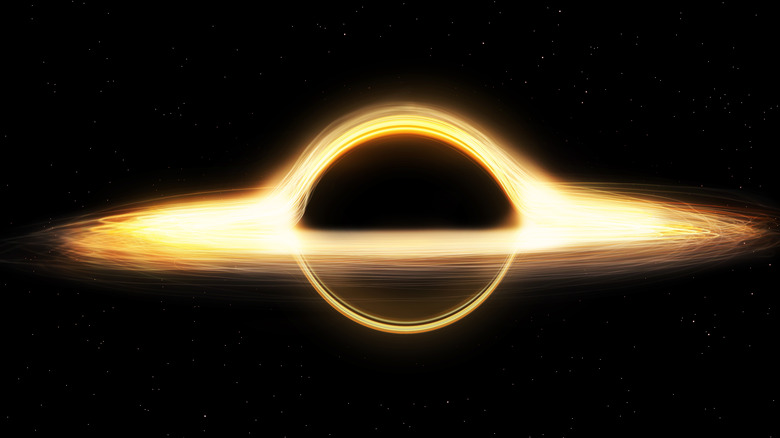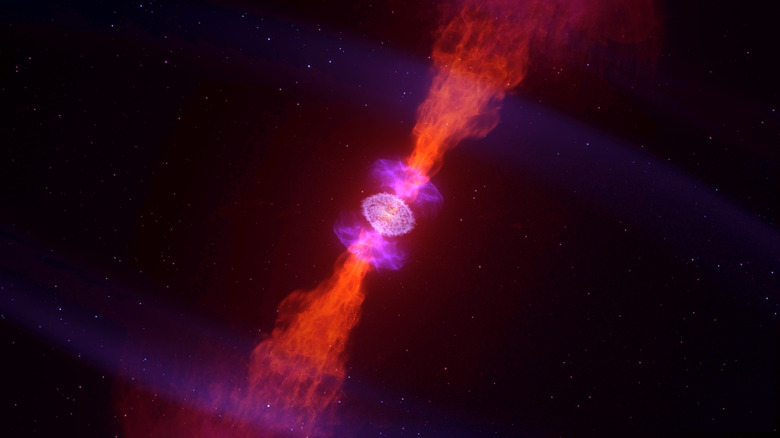The Heaviest Recorded Neutron Star Is Heavier Than You Think
South of the Leo constellation, in a constellation called Sextans, sits a collapsed star known as a neutron star. According to astronomers, the recent find holds the record as the heaviest neutron star known to scientists. The star, known as PSR J0952-0607, was discovered this year and reported on July 11. Stanford University professor and co-author of the study, Roger Romani, said of the find (via Science News), "It's defining the boundary between the visible things in the universe and the stuff that is forever hidden from us inside of a black hole." Stars of this kind hold the distinction of being right on the precipice of becoming a black hole (via Science News).
Neutron stars result from the death of enormous stars, whose cores die out and trigger a supernova. The remaining neutron star ends up incredibly small compared to its antecedent. At an average of about a few miles wide, neutron stars contain all the star's mass in an exceedingly small area, thus making them the densest astronomical objects in the universe, aside from the black holes they can collapse into (via Space.com).
Why these stars matter
Neutron stars are also sometimes called pulsars, after a subclass of neutron stars that spin rapidly and pulsate x-rays, gamma rays, and radio waves (via NASA). They spin at an average rate of once per second, but some do so at a far more impressive rate, with the most recent find doing so 700 times per second. This is the result of the new star being part of a binary system, where a neutron star swallows matter from a nearby star, thus causing such unusually fast rotation speeds (via Space.com).
The density of these stars is as unique as their rotation, with a sample the size of a sugar cube weighing a billion tons or more — according to NASA, that's roughly the weight of Mount Everest. By studying these stellar objects, scientists can get a clearer understanding of how matter behaves at such extreme densities. According to Alex Filippenko, an astronomer who was involved in the study, a pulsar or neutron star can be likened to a "Giant Nucleus," and the heaviest ones, such as the one he's studying, leaves a lot of mysteries open about the physics of a collapsed star that contains the mass of 500,000 Earths (via Space.com). These stars represent special conditions that so far cannot be replicated on Earth (via NASA).
The competition for heaviest neutron star
Fewer than 2,000 pulsars have been discovered, but scientists estimate that up to a billion exist in the Milky Way Galaxy alone. Many neutron stars are easier to spot when they're young and emitting the lighthouse beams that serve as the only means of detection (via NASA). Since the heaviest of these stars result in the most interesting nuclear studies, astronomers have kept their eyes open for the celestial heavyweights.
Before PSR J0952-0607 was discovered, the bearer of the heaviest star moniker was PSR J0740+6620, of the constellation Camelopardalis. It weighed 2.08 times what our sun weighs (per Science News). The new find exceeds its predecessor, weighing 2.35 times that of the sun. Roger Romani claims in his study that a neutron star of this kind must reach about this mass or more before becoming a black hole (via Space.com). With the average neutron star weighing only 1.4 times that of the sun, this new find may help scientists get closer to figuring out the boundary between a neutron star and a black hole (per Science News).


